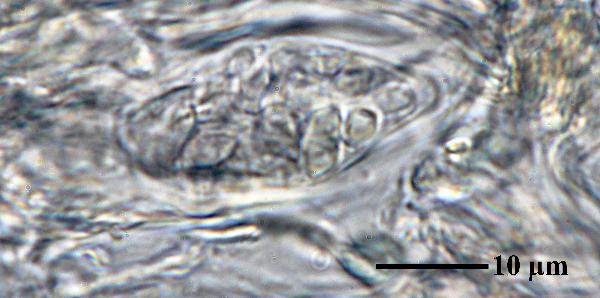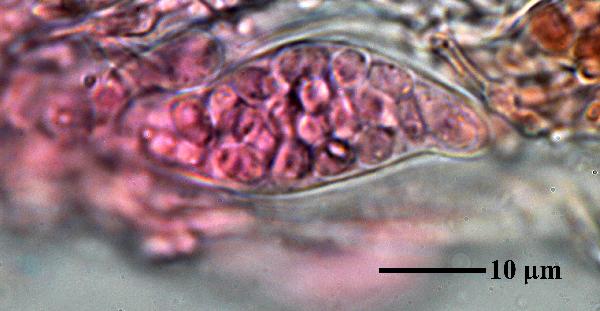Pleopyrenis picina (Nyl.) Clem.
Gen. Fung.: 174, 1909.. Basionym: Synalissa picina Nyl. - Act. Soc. linn. Bordeaux, 21, 4: 265, 1857 (1856)
Synonyms: Pyrenopsis picina (Nyl.) Forssell
Distribution:
Description: Thallus crustose, ecorticate, thinly episubstratic and film-like, effuse and poorly delimited, continuous to finely rimose, black when dry, dark reddish brown when wet, the areoles - when developed - flat, angulose, 0.12–0.5 mm, to 125 μm thick, attached by a thin gelatinous basal layer. Thallus anatomy homoiomerous, the hyphae forming a delicate network around cyanobiont cells, the hyphal cells more or less isodiametrical, angular, 3–4 μm wide. Apothecia numerous, very small, perithecioid, immersed to semi-immersed, (0.16-)0.2–0.24(–0.28) mm, lecanorine, with a punctiform, usually slightly concave, dark reddish brown disc and a persisting, smooth and shallow thalline margin, the ascogones formed beneath pycnidia (pycnoascocarps). Thalline exciple 65–73 μm wide; proper exciple lacking; epithecium pale reddish brown or colourless; hymenium 85–100 μm high, K/I+ deep blue; paraphyses distinct, at first straight, later becoming reticulate, branched and anastomosing, c. 1 μm thick, the apical cells somewhat widened, but not becoming moniliform, 2–3.5 μm wide; hypothecium colourless, with a rounded base. Asci (24–)32(–64)-spored, clavate, unitunicate-rostrate, with a distinct K/I+ blue apical dome and a distinct outer gelatinous cap, (55–)58–72.5 x 10–16.5 μm. Ascospores 1-celled, hyaline, broadly ellipsoid, 4.5–7 x 2.5–4.5 μm. Pycnidia broadly pyriform, with simple conidiophores. Conidia produced terminally, small-ellipsoid, c. 3 x 1.5 μm. Photobiont cyanobacterial, chroococcoid (Gloeocapsa), the cells globose, single or paired, 5.5–8.5 μm with sheath, 3–6.5 μm without sheath, the sheath 1–1.5 μm thick, the cyanobiont packets more or less vertically oriented, attacked by finger-like fungal haustoria. Spot tests: all negative. Chemistry: without lichen substances.Note: Widely distributed in continental Europe (Pyrenees, Black Forest, northern Alps, Ore Mountains, Giant Mountains), growing on wet acidic rocks, e.g. temporarily or seasonally inundated along clear water creeks or inclined rock faces moistened from seeping water (Prieto & al. 2024). To be looked for in Italy.
Growth form: Crustose
Substrata: rocks, soil, terricolous mosses, and plant debris
Photobiont: cyanobacteria, coccaceous (e.g. Gloeocapsa)
Reproductive strategy: mainly sexual

Predictive model
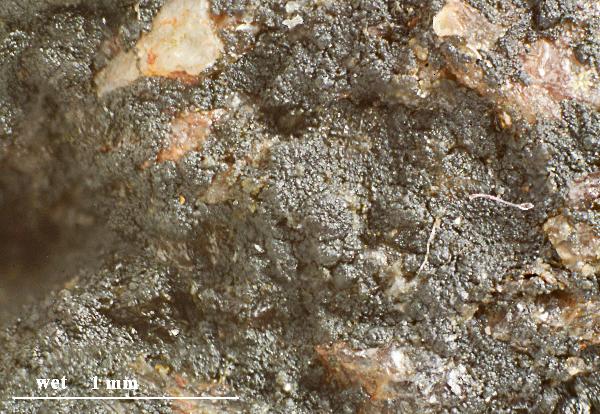

Felix Schumm - CC BY-SA 4.0
[ABL71548], Korea, Prov. Jeollanam-do, Goheung-gun Distr., Geumsanmyeoun,
Geogeum-do, Shinjeon-ri, Yeonson beach, on siliceous
rock. 34°26’48’’ N, 127°07’03’’ E, 2 m. Leg. A. Aptroot (no 71548),
19.10.2013, det., A. Aptroot, 2013.


Felix Schumm - CC BY-SA 4.0
[ABL71548], Korea, Prov. Jeollanam-do, Goheung-gun Distr., Geumsanmyeoun,
Geogeum-do, Shinjeon-ri, Yeonson beach, on siliceous
rock. 34°26’48’’ N, 127°07’03’’ E, 2 m. Leg. A. Aptroot (no 71548),
19.10.2013, det., A. Aptroot, 2013.


Felix Schumm - CC BY-SA 4.0
[ABL71548], Korea, Prov. Jeollanam-do, Goheung-gun Distr., Geumsanmyeoun,
Geogeum-do, Shinjeon-ri, Yeonson beach, on siliceous
rock. 34°26’48’’ N, 127°07’03’’ E, 2 m. Leg. A. Aptroot (no 71548),
19.10.2013, det., A. Aptroot, 2013.
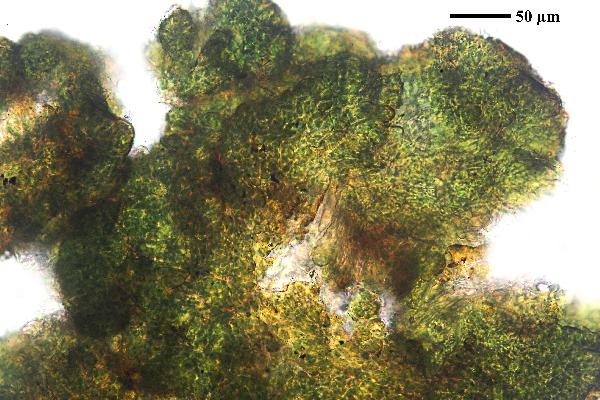

Felix Schumm - CC BY-SA 4.0
[ABL71548], Korea, Prov. Jeollanam-do, Goheung-gun Distr., Geumsanmyeoun,
Geogeum-do, Shinjeon-ri, Yeonson beach, on siliceous
rock. 34°26’48’’ N, 127°07’03’’ E, 2 m. Leg. A. Aptroot (no 71548),
19.10.2013, det., A. Aptroot, 2013.
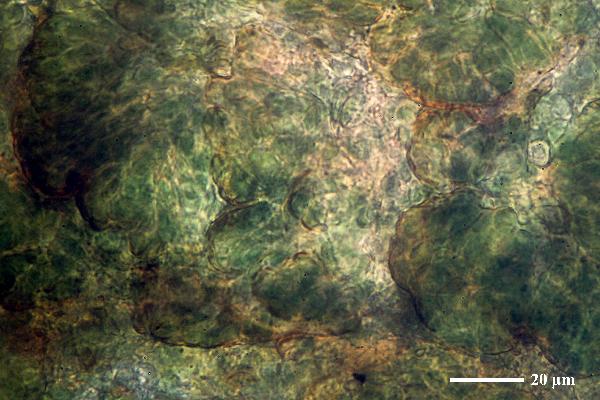

Felix Schumm - CC BY-SA 4.0
[ABL71548], Korea, Prov. Jeollanam-do, Goheung-gun Distr., Geumsanmyeoun,
Geogeum-do, Shinjeon-ri, Yeonson beach, on siliceous
rock. 34°26’48’’ N, 127°07’03’’ E, 2 m. Leg. A. Aptroot (no 71548),
19.10.2013, det., A. Aptroot, 2013.


Felix Schumm - CC BY-SA 4.0
[ABL71548], Korea, Prov. Jeollanam-do, Goheung-gun Distr., Geumsanmyeoun,
Geogeum-do, Shinjeon-ri, Yeonson beach, on siliceous
rock. 34°26’48’’ N, 127°07’03’’ E, 2 m. Leg. A. Aptroot (no 71548),
19.10.2013, det., A. Aptroot, 2013.
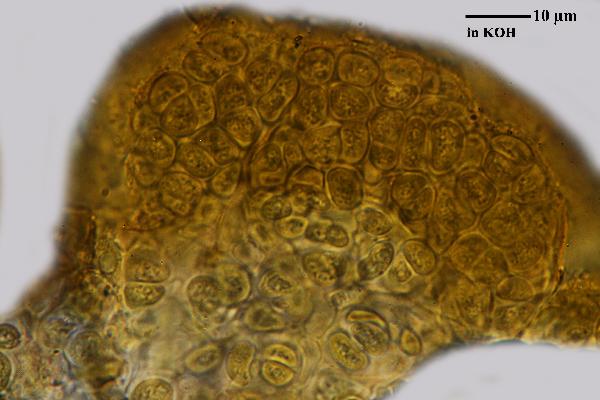

Felix Schumm - CC BY-SA 4.0
[ABL71548], Korea, Prov. Jeollanam-do, Goheung-gun Distr., Geumsanmyeoun,
Geogeum-do, Shinjeon-ri, Yeonson beach, on siliceous
rock. 34°26’48’’ N, 127°07’03’’ E, 2 m. Leg. A. Aptroot (no 71548),
19.10.2013, det., A. Aptroot, 2013.
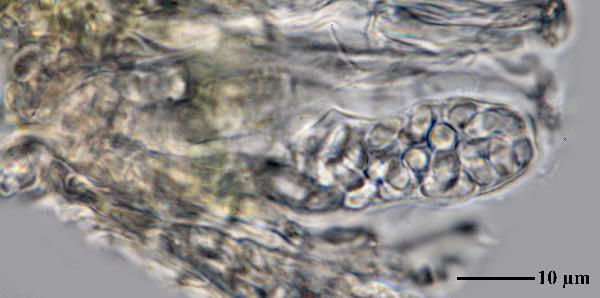

Felix Schumm - CC BY-SA 4.0
[ABL71548], Korea, Prov. Jeollanam-do, Goheung-gun Distr., Geumsanmyeoun,
Geogeum-do, Shinjeon-ri, Yeonson beach, on siliceous
rock. 34°26’48’’ N, 127°07’03’’ E, 2 m. Leg. A. Aptroot (no 71548),
19.10.2013, det., A. Aptroot, 2013.
Growth form: Crustose
Substrata: rocks, soil, terricolous mosses, and plant debris
Photobiont: cyanobacteria, coccaceous (e.g. Gloeocapsa)
Reproductive strategy: mainly sexual

Predictive model


Felix Schumm - CC BY-SA 4.0
[ABL71548], Korea, Prov. Jeollanam-do, Goheung-gun Distr., Geumsanmyeoun, Geogeum-do, Shinjeon-ri, Yeonson beach, on siliceous rock. 34°26’48’’ N, 127°07’03’’ E, 2 m. Leg. A. Aptroot (no 71548), 19.10.2013, det., A. Aptroot, 2013.


Felix Schumm - CC BY-SA 4.0
[ABL71548], Korea, Prov. Jeollanam-do, Goheung-gun Distr., Geumsanmyeoun, Geogeum-do, Shinjeon-ri, Yeonson beach, on siliceous rock. 34°26’48’’ N, 127°07’03’’ E, 2 m. Leg. A. Aptroot (no 71548), 19.10.2013, det., A. Aptroot, 2013.


Felix Schumm - CC BY-SA 4.0
[ABL71548], Korea, Prov. Jeollanam-do, Goheung-gun Distr., Geumsanmyeoun, Geogeum-do, Shinjeon-ri, Yeonson beach, on siliceous rock. 34°26’48’’ N, 127°07’03’’ E, 2 m. Leg. A. Aptroot (no 71548), 19.10.2013, det., A. Aptroot, 2013.


Felix Schumm - CC BY-SA 4.0
[ABL71548], Korea, Prov. Jeollanam-do, Goheung-gun Distr., Geumsanmyeoun, Geogeum-do, Shinjeon-ri, Yeonson beach, on siliceous rock. 34°26’48’’ N, 127°07’03’’ E, 2 m. Leg. A. Aptroot (no 71548), 19.10.2013, det., A. Aptroot, 2013.


Felix Schumm - CC BY-SA 4.0
[ABL71548], Korea, Prov. Jeollanam-do, Goheung-gun Distr., Geumsanmyeoun, Geogeum-do, Shinjeon-ri, Yeonson beach, on siliceous rock. 34°26’48’’ N, 127°07’03’’ E, 2 m. Leg. A. Aptroot (no 71548), 19.10.2013, det., A. Aptroot, 2013.


Felix Schumm - CC BY-SA 4.0
[ABL71548], Korea, Prov. Jeollanam-do, Goheung-gun Distr., Geumsanmyeoun, Geogeum-do, Shinjeon-ri, Yeonson beach, on siliceous rock. 34°26’48’’ N, 127°07’03’’ E, 2 m. Leg. A. Aptroot (no 71548), 19.10.2013, det., A. Aptroot, 2013.


Felix Schumm - CC BY-SA 4.0
[ABL71548], Korea, Prov. Jeollanam-do, Goheung-gun Distr., Geumsanmyeoun, Geogeum-do, Shinjeon-ri, Yeonson beach, on siliceous rock. 34°26’48’’ N, 127°07’03’’ E, 2 m. Leg. A. Aptroot (no 71548), 19.10.2013, det., A. Aptroot, 2013.


